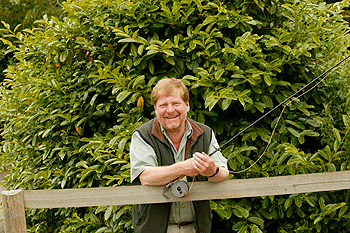Gamekeeper

A week ago we hosted an open farm event for the Campaign for the Farmed Environment (CFE) on our shoot. During the afternoon, our farm manager, Tim joined us as we took the 20 or so visitors for a tour to explain the basic farm policy, and how we integrate conservation and game management into a commercial arable farm.
Following the basic CFE theme of working towards full life-cycle support for farmland wildlife, I set about explaining how we aim to support our grey partridges throughout the year. In particular, I explained the significance of providing insect-rich, brood-rearing cover near the best nest sites.
In my role as a game adviser for the Game & Wildlife Conservation Trust (GWCT), I still find that this is the least-understood aspect of conserving wild lowland game. Everyone knows that gamechicks need insects, but few understand what sort and where. Big buzzy things like bees and hoverflies are no use; what chicks need is a steady supply of soft and succulent creepy-crawlies. Most of the useful insects are those in their younger stages: caterpillars and other larvae. They also need to be within a chick?s reach; not flying about among the flowers of the canopy.
So, the perfect brood-rearing habitat actually copies the ?primitive? cereal- growing landscape that was the shop floor of agricultural revolution farming, when gamekeeping was in its heyday a century or more ago. What you need to copy this perfection is a thin cereal crop and a modicum of small broad-leaved weeds such as speedwell, mayweed and redshank. This gives a canopy from the swelling cereal heads, which makes mother bird feel safe from prying eyes overhead. Underneath this, the combination of crop and weeds gives the perfect habitat for the larvae that drive growth in our precious chicks. To provide this sort of environment on our little shoot, we have a network of 3m-wide brood strips that total about 4km in length. We sow these in October by simply broadcasting a winter cereal over the 3m-wide strip of prepared ground. This is then scratched under the soil with a harrow and rolled down. The whole project takes just half a day of my time to broadcast the seed, and about a day of tractor work by my friend Erik.
We have experimented with leaving the strips until spring to provide a food source of corn and weed seeds in winter, but the risk of poor establishment in dry spring weather is just too great. Autumn sowing may sacrifice a bit of winter food, but we can replace that through our hoppers, and the better brood cover that results more than outweighs this.
The benefits of stubble
Back to our farm walk. Two of the next-door keepers joined us and announced that they were already impressed by our green stubbles on either side of the main drive. Stubble is a wonderful thing, providing a valuable foraging area for game. There are spilt grains, weed seeds and green shoots to graze. We are lucky that our shoot has proper stubbles when so many do not. These days, even where there is spring cropping, many stubbles are sprayed off with herbicide in autumn ? either to control weeds, or to kill the cereal volunteers for fear that they will provide an alternative host for various crop diseases. Even so, ours are blocked up on one part of the shoot, in the modern way, rather than being scattered across the whole area; but hey, they are there.
As we trundled around, the wildlife value of the stubbles became clear to all present. There were hares wherever we went, and flocks of linnets and other small birds milling around. With the warm autumn weather, there were also lots of pollinating insects buzzing around the fl owering weeds.
From a game management point of view, there is also a deeper significance. Stubble really does help our birds. As well as food, it provides cover and entertainment ? pheasants and partridges love it. Over the weekend, this amateur keeper has been out scattering a bit of wheat about and filling a few hoppers. The value of stubble was brought home even more clearly as I did this ? those in the stubbles had not been touched, but there was plenty of game around. At the other end of the shoot, where the woods are surrounded by newly established winter wheat and rape, most were all but empty. There may be some natural food about, but all things considered, proper winter stubbles clearly outweigh this for pheasants and partridges.
Let us start a campaign: ?Keepers for Proper Stubbles?. It?s about telling our farming friends not to spray off their stubbles as a routine. When there is real need, fair enough, but in most cases, leaving them to green up causes no major farming difficulties and helps a whole host of wildlife.








